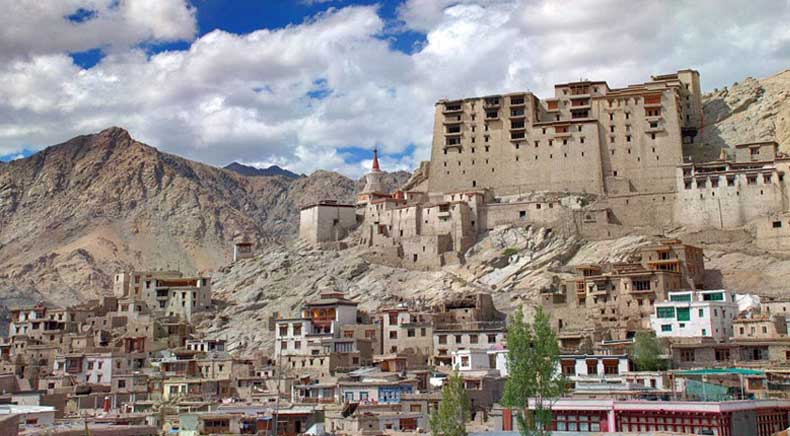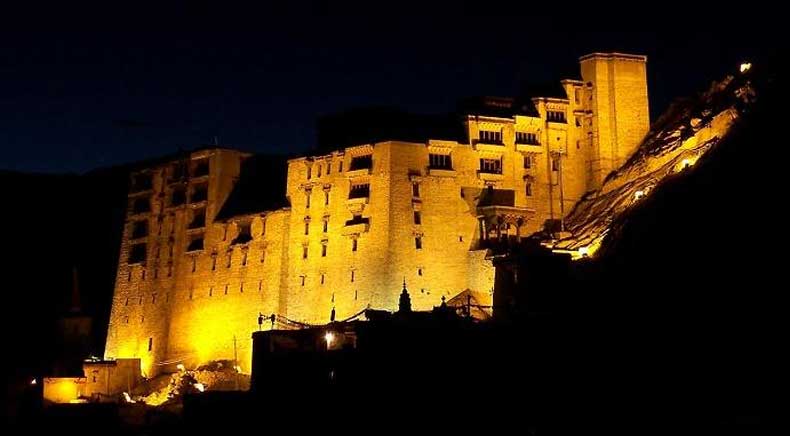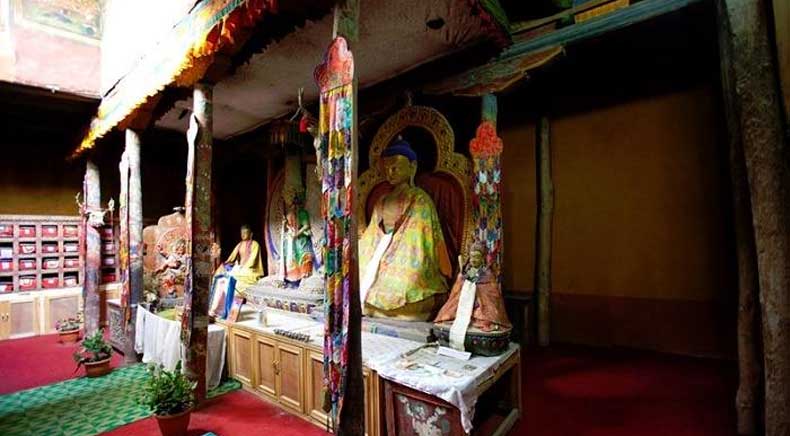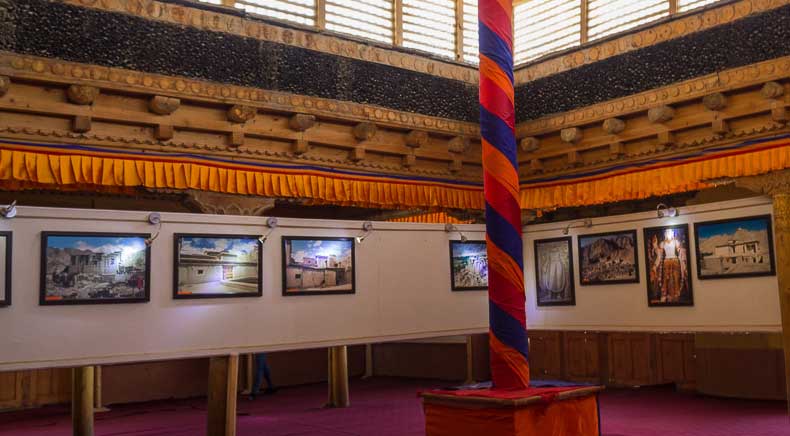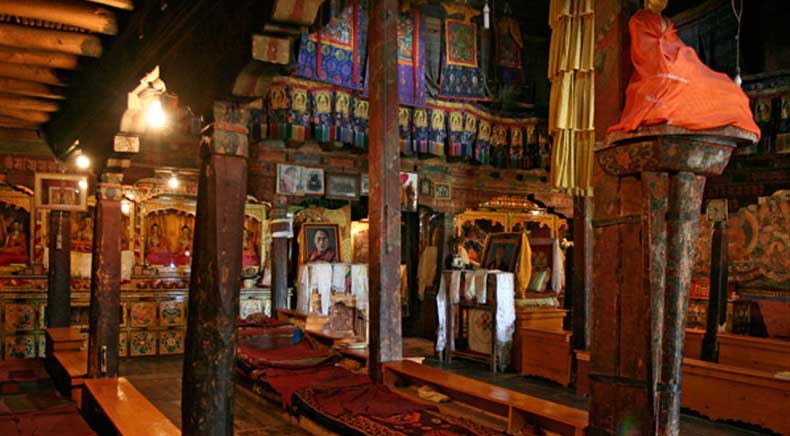Sunrises and sunsets are extraordinarily beautiful and captivating scenes when viewed from the top of this palace, and it is this aesthetic beauty and charm that attract tourists from all across the globe to come and pay a visit to this hidden gem in northern India. The palace looks even more stunning when it is lighted up on certain special occasions, such as Galdam Namchot festival when locals gather around the palace to celebrate the local festival.
Even though a huge part of the Leh Palace has now been turned into ruins due to the Kashmiri invasion that took place in the 19th century, the palace continues to remain a stunning place to explore. The beauty of the Leh Palace still stands in pride with a lot of ancient Buddha relics, paintings, old utensils, cutlery used by the royal family and artefacts adorning the walls of the palace. The regal palace is presently under the Archaeological Survey of India, which is working to renovate the ancient structures of that era and striving to keep intact the history of the Namgyal dynasty in Leh.
History of Leh Palace
The Leh Palace has been designed in line with the Potala Palace in Lhasa in Tibet. The construction of the Leh Palace, which began in the year 1553, was started by one of the rulers of Namgyal dynasty, Tsewang Namgyal. The construction was then completed by his successor, Sengge Namgyal in the 17th century. These rulers later resided in the Leh Palace along with their family. The grand structure of the palace was complete with nine storeys in all, which made it one of the tallest structures of those times. The upper floors were used for accommodation, while the floors below houses stables and storerooms.
The Leh Palace was abandoned by the royal family in the mid 19 century when the Dongra forces took over Ladakh. Consequently, the Namgyal family had to shift to the Stok Palace. The palace is now in a dilapidated condition and has been converted into an archaeological museum that proudly displays the artefacts of the yesteryear's rulers of Leh.
Architecture of Leh Palace
The Leh Palace is a magnificent example of the Tibetan architecture and attracts tourists from all across the globe, who cannot help but marvel at the grandeur and elegance of this antique structure. Even though the size of the Leh Palace is smaller, it closely resembles the Patola Palace of Lhasa. Huge buttressed walls and jutted out wooden balconies are characteristic features of this architectural style.
Leh Palace Museum
The Leh Palace is sadly now in ruins, but a few small rooms and corridors still exist. The more substantial rooms and compartments have been turned into exhibition halls, and the museum is maintained by the Archaeological Survey of India.
A Visit to the Palace
The Leh Palace that at present serves as an office of Archaeological Conservation Organization of the government of India remains open for the public from 7.00 AM to 4.00 PM. Entry fees per person for Indian citizens is Rs. 15/- and for foreigner nationals is Rs. 100/-. As the place is in the lap of the mountains, the best time to visit is during the summers from April to September when the weather remains pleasant and sun rays glitter up the mountain ranges thus ensuring eye catching panoramic views making the trip one of the most enjoyable and memorable one.
How to Reach:
By Road :Ordinary and deluxe buses operated by J & K State Road Transport Corporation (J&K SRTC) ply from Srinagar to Leh. Cars and jeeps can also be hired from Srinagar to reach Leh. J&K SRTC and Himachal Pradesh Tourism, HRTC also operates ordinary and deluxe buses from Manali to Leh on daily basis. Jeep taxis and Maruti Gypsy can also be availed from Manali to reach Leh. Adventure lovers from across the globe often go for self driving and hire jeep, SUV, motorbike or even a bicycle to reach Leh either via higher road from Rohtang La via Keylong and Sarchu or via the lower road from Jammu & Kashmir.
By Air : Leh is connected by air with Srinagar, Jammu and Delhi
By Rail :This route is not much popular among travellers as the nearest railway stations from Leh are Chandigarh and Pathankot from where one will have to take a 3-day bus journey to reach Leh.
